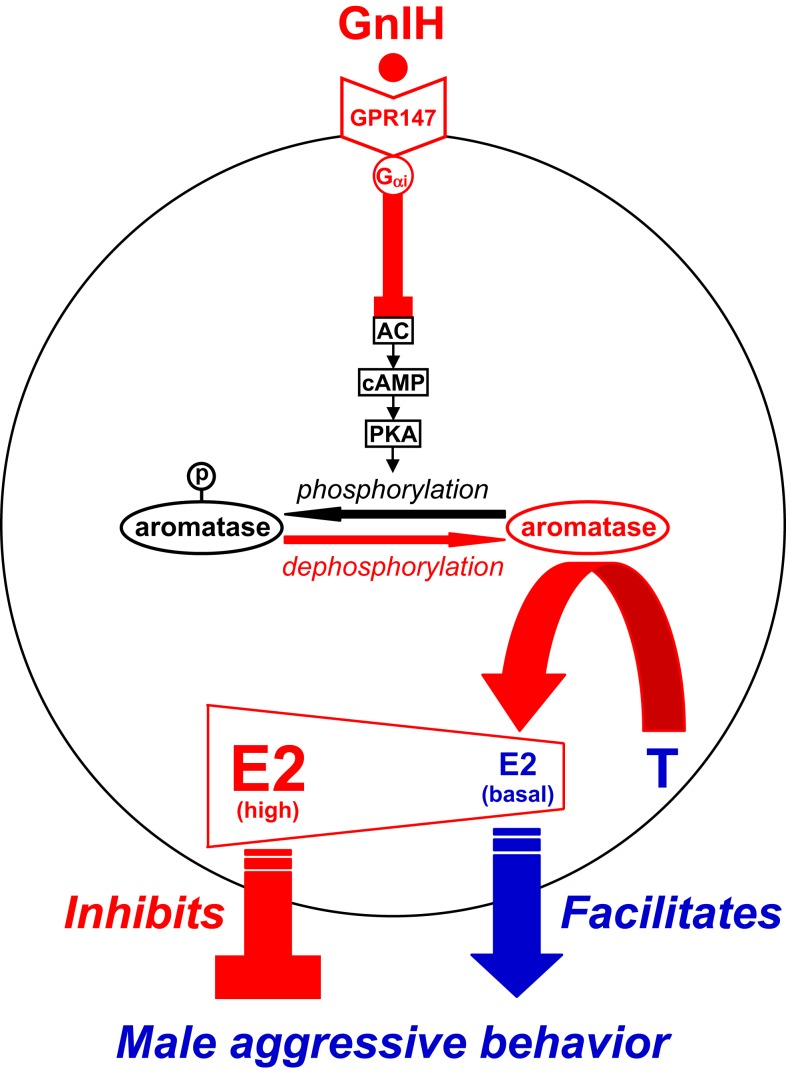Figure 3.
Model of the intracellular mechanism of GnIH and its receptor (GPR147) that control male aggressive behavior by regulating the activity of aromatase and neuroestrogen synthesis in the brain. GPR147 is expressed in aromatase immunoreactive cells in the brain. GPR147 is coupled to Gαi protein that inhibits the activity of adenylate cyclase (AC) and decreases cAMP production and the activity of protein kinase A (PKA). Inhibition of AC/cAMP/PKA pathway may decrease phosphorylated aromatase and increase dephosphorylated aromatase. 17β-Estradiol (E2) synthesized from testosterone (T) by aromatase in the brain especially in the preoptic area (POA) regulates male aggression. The administration of GnIH activates aromatase by decreasing phosphorylated aromatase and stimulates neuroestrogen synthesis in the brain. GnIH may inhibit aggressive behavior by directly activating aromatase and increasing neuroestrogen synthesis in the brain beyond its optimum concentration for the expression of aggressive behavior. Partially adapted from Ubuka and Tsutsui (33).

